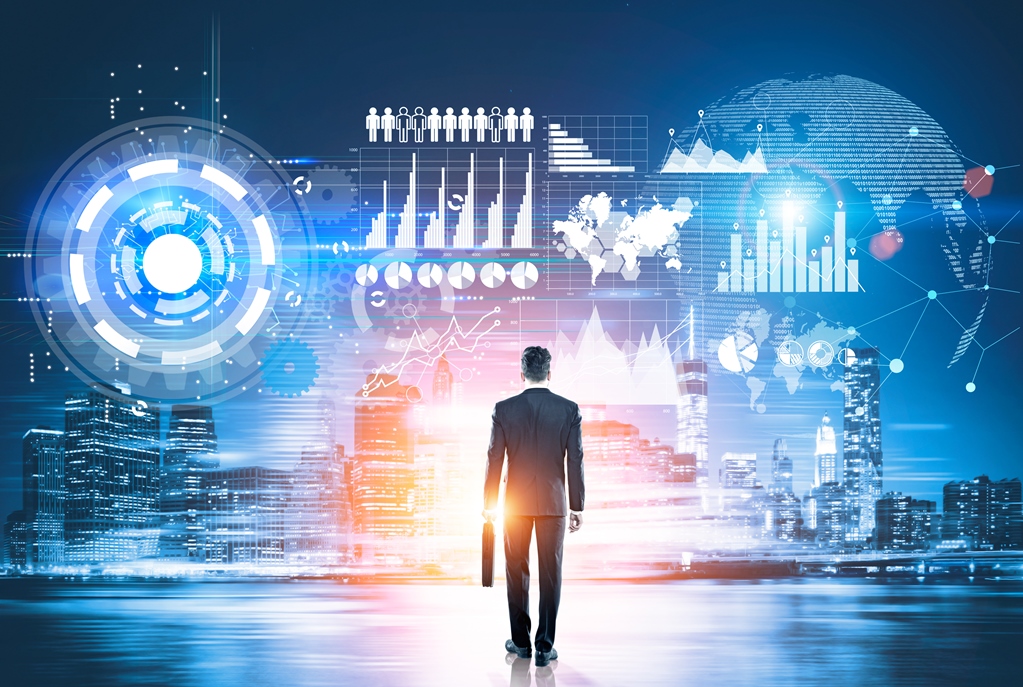The digital economy is making rapid progress in India, providing a unique opportunity to accelerate economic growth and connect citizens to services and jobs
BY PARSA VENKATESHWAR RAO JR
Prime Minister Narendra Modi is an ardent believer in technology. Since taking office in 2014, he has set his sights on digitising India because he can see the future is digital. Even his critics would not differ with him on this issue. One of the main reasons behind Modi’s demonetisation in November 2016 was to push the majority of Indians to switch to digital payments and get rid of old-fashioned currency notes. His critics would argue that demonetisation was the wrong way to reach the digital goal. But it has been found that post-demonetisation, digital transactions have increased on a phenomenal scale.
The digital economy is making rapid progress in India and the Modi government is pushing it with firm conviction. Government transactions, that is, purchases by the ministries and the Central Public Sector Enterprises (CPSEs), have picked up momentum through the Government e-Marketplace (GeM) and crossed the Rs 1 trillion mark in the FY 2023. According to the chief executive of GeM, P.K. Singh, the target for Fiscal 2023 was Rs 1.5 trillion but he expects it to touch Rs 1.8 trillion, going by the brisk purchases. The sellers are private businesses but the buying is entirely by the ministries and public sector units (PSUs). The government has directed that central ministries and central PSUs must make their purchases through the GeM portal, launched in August 2016, to increase transparency in government transactions.
The government has been working out the mechanics of digitising India following Prime Minister Modi’s Digital India initiative in 2015. In a written reply in the Lok Sabha in August this year, Rajeev Chandrasekhar, the minister of state for electronics and information technology and skill development and entrepreneurship, cited the report of the Ministry of Electronics and Information Technology (MeitY) in partnership with researchers at McKinsey & Company, which projected that the Indian digital economy would grow to $1 trillion by 2025 and could support 60-65 million IT-enabled jobs. He also cited the report of the National Association of Software and Services Companies (NASSCOM) that the required manpower for the IT sector alone would be 9.5 million by 2026, of which 5.5 million would be “digitally skilled across key digital technologies such as cloud computing, Artificial Intelligence (AI), big data analytics and Internet of Things (IoT)”.
Further, addressing the CII Madhya Pradesh Conclave on Digital Acceleration in Indore, the minister said that as India takes over the G20 presidency, it will play a key role in shaping the technology and digitalisation of the world. “Technology and digitalisation are going to play a significant role in shaping of the economies, the trades and the multipolar world of the future,” he added.
According to the MeitY report on “India’s trillion-dollar digital opportunity” , the projection is that the share of the digital economy as part of the total Indian economy would be between 18 percent and 23 percent by 2024-25, up from 8 percent in 2017-18. The ministry’s report shows that 49 percent to 50 percent of the trillion-dollar economy would be contributed by “new and emerging digital ecosystems” which include $65 billion to $70 billion in jobs and skills for the future, $90 billion to $120 billion in next generation financial services, and $135 billion to $155 billion through “Make in digital India, make for India and make for the world”. IT-BPM (IT-Business Process Management) is expected to account for $200 billion to $250 billion, electronics manufacturing share would be around $100 billion to $130 billion, digital communication services $50 billion to $55 billion, digital payments $30 billion to $40 billion, digital beneficiary transfers (DBT) $10 billion to $15 billion, and e-commerce $15 billion to $20 billion. That is a very interesting inverted pyramid scale. It shows that the major contribution to the one trillion-dollar digital economy by 2025 would come from services of the sophisticated next generation kind, and what look like growth segments now such as digital payments, DBT, e-commerce would remain at the bottom of the growth pyramid.
The more interesting aspect is the job profile of the digital economy. The projection is that it would support 60 million to 65 million jobs, of which 45 million would be retrained and redeployed. Of this digital workforce, five to six million would be in transport and logistics involving radio taxi drivers, big data experts optimising platforms, and drivers of IoT-enabled trucks. Another seven million to eight million workers would be engaged in IT-BPM, finance, media and telecom which would include those adept in digital skills in handling social media, cybersecurity, cloud computing, big data analysis, network engineering and business correspondents. Ten million to 12 million workers would be absorbed in trade and hospitality as delivery agents in e-commerce companies and as workers in hotels linked to shared accommodation platforms. Surprisingly, a large number of the workers in this digital economy will be employed in the agriculture sector—16 million to 18 million—as agriculturalists doubling as field agents for input companies, and as basic services providers to local populations. And another 10 million to 12 million will be involved as R&D technicians, hardware design professionals, electronic assembly workers for new device ecosystems, shop floor workers (re)trained in industry 4.0 to use factory analytics and automation tools. This is indeed a detailed analysis of the kinds of work and how many would be absorbed in each.
Of course, this is but a projection of what could be the first phase of a digital economy, which is going to grow and diversify as the decade passes and new ecosystems open up. What is clear is that about 65 million workers, a fraction of the 800 million-plus workforce in the country, would be bringing about a radical change in the way we work and live.
It is also useful to remember that India is making its way through the digital economy ranks. In a decade or so, it might move into the top league. But it has now moved from the bottom towards somewhere in the middle, from a score of 17 in 2014 to 32 in 2017 on a scale of 0 to 100. The 17 countries were assessed on 30 indices and demarcated into mature and emerging digital economies under the Country Digital Adoption Index (CDAI). The indicators include 4G coverage, smartphone users, mobile broadband subscribers, download speed, e-commerce, cashless consumer transactions, and online government services. In 2017, it was found that South Korea was at the top of the list with a score of 75 with Sweden in second place at 73. The UK and Singapore were next with scores of 67 each, followed by the US and Australia at 66 each. Canada had 65, Russia and Japan 64, Germany 61. Then came France with 58 and Italy with 57. The emerging economies followed: Brazil 50, China 47, Indonesia 40, South Africa 40, and India 32. But India showed the second fastest growth in the CDAI between 2014 and 2017 with a 90 percent growth, while Indonesia was in first place at 99 percent growth. China followed with 45 percent growth in the same period. Russia and Germany grew at 44 percent and Japan at 43 percent.
The growth of the digital economy is a new story and India is in the race. While launching Digital India, Prime Minister Modi said that India had missed the industrial revolution, but it should not miss the IT revolution.

The prospect of the digital economy in India reaching a value of one trillion dollars by 2025 fits in with the target of India turning into a $5 trillion economy by the same year. The digital economy would contribute one-fifth of the value of the total economy. And that is what the MeitY report about the trillion dollar opportunity shows. India’s digital economy would be 18-23 percent of the national economy. The pace could grow and the proportion too. With greater digitisation, the share of the digital economy would be greater.
The World Bank recognises that digitalisation would accelerate the growth of the developing and emerging economies. The World Bank and the United Nations Conference on Trade and Development (UNCTAD) rightly emphasise that governments should bring more citizens onto digital platforms through identity cards, government services and education, so that people are educated and skilled to navigate the digital world and even find economic opportunities through it.
The digital world does generate jobs but not enough for all, but it enables people working in other sectors to use the digital platforms to connect and find sources for jobs. There is also the emphasis on owning mobile phones, especially smartphones so they can connect to the internet. This would require governments to expand broadband connectivity across the country and make it available to people of all classes. If the poor and the less educated are left out of the digital world, they may not be able to access the digital economy. A World Bank note on the merits and uses of the digital economy says, “Digital technologies are at the forefront of development and provide a unique opportunity for countries to accelerate economic growth and connect citizens to services and jobs.” But it is a challenge to achieve this digital transition because the digital divide stares you in the face across the world. The WB note says, “…in 2022, nearly 3 billion people remain offline, the vast majority without access are concentrated in developing countries. And the usage gap remains a challenge. Close to half (43 percent) of the world’s population were not using mobile internet last year, despite living in areas with mobile broadband coverage.”
And there are two other gaps, gender and age. Women are seven percent less likely to use a mobile phone and 16 percent less likely to use mobile internet, which translates into 264 million less women using mobiles and mobile internet. Similarly, 71 percent of the 15-24 age group uses the internet, while the figure is 57 percent for all other age groups. And in 2022, 60 percent of global GDP is expected to depend on digital communication technologies. It means that people without access to digital communications are more likely to be left out of economic growth. That is why it becomes important for governments to take a lead in extending digital connectivity to the largest number of people.
The government has to provide the educational facilities to make citizens IT-able, and the Modi government is pursuing the goal with zeal. One of Prime Minister Modi’s aims is to make the government accessible to all through digital platforms, which includes Direct Benefit Transfers (DBTs) and the IT-enabled Aadhaar identity card which gives access to citizens to many of the government’s developmental programmes. Digitisation of government services is seen as a way of empowering the people. This also requires people to evolve firewalls to provide cyber security, to make the internet safe for children, and to use AI to push through evolved forms of digital services. At the base of it all remains the need to educate people of all classes and ages and regions so that they can participate in the new economy facilitated by the digital world. While the government has to enhance digital services through various platforms, the private sector entrepreneurs can spawn plenty of opportunities to create services, jobs, incomes and revenues.
An important aspect of the digital economy is that it spills over national boundaries, and governments are forced to take measures to deal with this. The International Monetary Fund (IMF) says, “In the race to dominate the technologies of the future, the competition between the United States and China has led to import and export bans of 5G network technologies, semiconductors and social media platforms, and data-based security applications across multiple countries. Countries are also imposing restrictions on financial market access for foreign tech firms deemed to be security risks. Trade liberalisation in digital services is giving way to increased restrictions.”
India is maintaining a fine balance between security implications of new digital technologies and keeping the door open for foreign investment in the domestic digital economy. India is rolling out its own 5G network so that it does not have to use Chinese 5G technology provided by Hua Wei. At the same time, Google has invested $10 billion and Facebook $7 billion in Reliance’s Jio platforms even as Covid-19 was at its peak in April 2020. Amazon had invested $1 billion in January 2020. Google CEO Sundar Pichai had said then, “When I was young every new piece of technology brought new opportunities to learn and grow. But I always had to wait for it to arrive from someplace else. Today, people in India no longer have to wait for technology to come to you. A whole new generation of technologies are happening in India first.”
As the world’s tech giants invest in India and give a fillip to the domestic digital economy, the Indian system is responding to the demands of people and corporations. Digital purchases are now being paid for through digital payments. And we are but a step away from using the digital rupee to pay for digital purchases. The RBI statement said, “The e-R would be in the form of a digital token that represents legal tender. It would be issued in the same denominations that paper currency and coins are currently issued.”
IDFC Bank Managing Director V. Vaidyanathan explains the scope of the use of the digital rupee: “We see it as replacing the use case for currency notes. In future, it will be possible to transact without a network. The advantage it will have over currency notes is that of security and eliminate risk of counterfeiting. It will also reduce costs as printing costs of currency notes will come down.”








